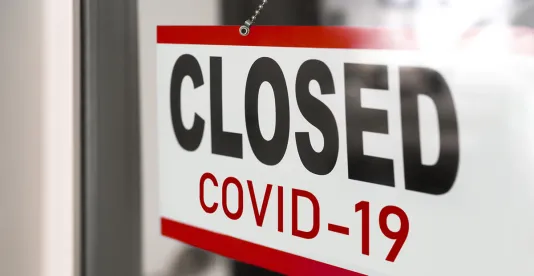On April 30 the Federal Reserve announced new details (the “April 30 Release”) regarding the expanded scope of its Main Street Lending Program, including the addition of a third facility allowing loans with a higher leverage ratio and the expansion of eligibility for all three facilities to borrowers with fewer than 15,000 employees or less than $5 billion in 2019 revenue (versus 10,000 employees or $2.5 billion in revenue in the prior releases).
The release also included updated term sheets for each of the three facilities as well as a frequently asked questions document (the “FAQ”). The updated term sheets and FAQ address some of the open questions relating to the program, but leave additional terms as well as a start date as open items to be addressed in future releases—therefore potential borrowers and lenders can review and prepare but may not yet begin the full application, underwriting or documentation processes. Although additional details and start date remain outstanding, the Federal Reserve did not solicit a further round of comments in the April 30 Release.
This alert includes a basic summary of the Main Street Lending Program as well as significant changes in the April 30 Release—if you have any questions, please reach out to the Polsinelli lawyers listed or your regular Polsinelli contact. Polsinelli will be releasing a detailed summary of all published terms of the Main Street Lending Program in due course.
Main Street Lending Program Structure
The basic structure of the program remains unchanged—eligible bank lenders would originate new loans or new tranches of existing loans and sell a participation interest in that debt obligation to a Federal Reserve special purpose vehicle (the “Fed SPV”). The structure leverages existing bank lending and credit underwriting systems, rather than direct lending from the Federal Reserve or U.S. Treasury, and the loans are not eligible for forgiveness. The Fed SPV would be capitalized with an initial equity investment from the U.S. Treasury and leverage from the Federal Reserve to provide up to $600 billion in loans across the program and Secretary Mnuchin has indicated willingness to increase its investment and therefore the total program size if necessary. The Federal Reserve specified that it will be publishing on its website a form of participation agreement to be used for loans participated to the Fed SPV under the Main Street Lending Program.
As modified by the April 30 Release, the Main Street Lending Program would be composed of three facilities with some key differences as to the loan minimum and maximum amount available:
-
The Main Street New Loan Facility (MSNLF) – Lenders would originate new secured or unsecured loans to eligible borrowers and sell a 95% participation interest to the Fed SPV, with the originating lender retaining the remaining 5%. Loans would be available in a minimum size of $500,000 and a maximum of the lesser of (i) $25 million or (ii) an amount that when added to outstanding debt (including committed but undrawn debt), is less than four times the borrower’s adjusted 2019 EBITDA.
-
The Main Street Priority Loan Facility (MSPLF) – This facility was newly added in the April 30 Release and generally has the same terms as the MSNLF, but allows a leverage ratio of up to six times adjusted EBITDA in its loan maximum calculation, and in turn requiring requires the originating lender to retain a greater portion of the loan (15%).
-
The Main Street Expanded Loan Facility (MSELF) – Lenders and borrowers would agree to add a new tranche with MSELF eligible terms to an existing loan, with that new tranche being pari passu with the existing loan and having a pro rata security interest in any loan collateral. The originating lender would sell a 95% participation interest in the new tranche to the Fed SPV and would retain the remaining 5%. The new tranche would have a minimum size of $10 million, and a maximum of the lesser of (i) $200 million, (ii) 35% of the borrower’s outstanding debt (including committed but undrawn debt) or (iii) an amount that when added to outstanding debt (including committed but undrawn debt), is less than six times the borrower’s adjusted 2019 EBITDA.
Key Changes in the April 30 Release
-
Basic Loan Terms
-
Loan Amount – The loan minimum amount was decreased to $500,000 for the MSNLF (down from $1 million in prior releases) and the MSPLF. There is a higher minimum ($10 million) for the MSELF and the MSELF maximum amount was increased to $200 million from $150 million (subject to the percentage of overall debt and leverage prongs).
-
Loan Repayment – The loans remain four year term and payment-deferred for the first year (with deferred interest capitalized), but the April 30 Release specifies a principal amortization schedule for years 2 to 4 (33% each year for the MSNLF and 15%, 15%, 70% for both the MSPLF and MSELF).
-
Interest Rate – The April 30 Release removes the requirement to reference the secured overnight financing rate (SOFR) and a range of spread (2.50 – 4.00%), in favor of a new interest rate for all facilities of LIBOR (one or three month) plus a fixed spread of 3.00%.
-
-
Borrower Eligibility
-
The facilities would be unavailable to any borrower formed on or after March 13, 2020, or that would be ineligible under specified portions of the Small Business Administration’s regulations restricting certain business types from loan eligibility.
-
The threshold to determine borrower eligibility increased to fewer than 15,000 employees or less than $5 billion in 2019 revenue (versus 10,000 employees or $2.5 billion in 2019 revenue in prior releases).
-
-
Answers to Some Open Questions
-
EBITDA determination – Each facility references the borrower’s 2019 EBITDA as part of its determination of maximum loan amount available, and the April 30 Release clarifies that lenders should use “adjusted EBITDA”, which is required to be consistent with the methodology the lender previously used to calculate EBITDA in the existing loan with the borrower or in extending credit to similarly situated borrowers.
-
Loan priority and existing loan repayment – The April 30 Release clarifies that new loans under the program may be pari passu with existing debt and that borrowers may repay existing debt when mandatory and due, but may not repay or refinance on a voluntary basis. Loans under the MSNLF may not be contractually subordinated to other debt (though by implication may be effectively subordinated to secured debt). Loans or tranches under the MSPLF or MSELF must be senior to or pari passu with existing debt in terms of priority and security (other than with respect to mortgage debt).
The FAQ also clarifies that the borrower may repay a line of credit in accordance with the borrower’s normal course of business usage of that credit.
-
Borrower financial position – In addition to certifications required under the prior releases, the April 30 Release adds a new certification requirement that the borrower must have a reasonable basis to believe that as of the date of origination it had the ability to meet its financial obligations for at least the next 90 days. Therefore borrowers that are severely financially distressed by pandemic impact may be ineligible.
-
Affiliate aggregation – A significant open question in the prior releases was whether borrowers were required to aggregate with entities under common ownership or control. The FAQ clarifies that eligibility would be determined in accordance with the Small Business Administration’s affiliation and aggregation regulations.
-
Employee retention – The April 30 Release retains a similarly flexible, but differently worded, employee retention certification standard from the prior releases. Borrowers must make “commercially reasonable” efforts to retain employees, including good faith efforts to maintain their payroll.
-
Restrictions on capital distributions for pass-through entities – The April 30 Release adds a clarification that the required restriction on capital distributions does not apply to pass-through entities to the extent such distributions are reasonably required to cover the owner’s tax obligations with respect to pass-through earnings from the borrower.
-
Lender diligence and surveillance – Lenders would not be required to verify borrower certifications and covenants, or to engage in any surveillance during the loan term. Though lenders that become aware of a material misstatement or breached covenant must notify the Federal Reserve.
-
Credit Underwriting – The FAQ clarifies that the borrower eligibility requirements are intended to be a minimum and that lenders should apply their own underwriting standard in determining whether and in what amount to make a loan to an eligible borrower.
-
The full April 30 Release, including term sheets for each facility and the FAQ, is available here.









 />i
/>i

